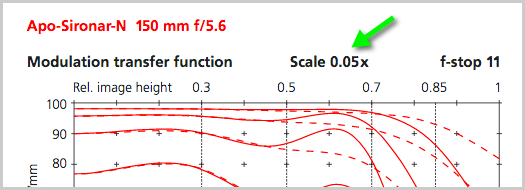Was wondering how other people test their lenses. Did a search in the Forum and didn't come up with a thread on the different ways people use to test lenses (probably again just my not using the correct search words), so here goes... I invite others to describe their lens testing methods and procedures.
"Bench testing" shooting a commercial lens resolution chart I had done in the early 1980s, but found that all it told me was the resolution of the lens when shooting a flat surface at a relatively close distance of 8 feet away. Hardly at all like what I shot in the field.
So decided to shoot a subject at the typical distance of most of my LF photographs. For me here in New England, it was a few hundred feet away. Include subject matter that had enough detail for me to make subjective observations on the sharpness of the lens. Pick a covered shooting location that I could return to year round (not so simple here in New England, especially in the winter). Lighting from the sun optimal to be 90 degrees from the lens axis so as to give me shadows and highlights to indicate the contrast of the lens, flare, and more, so I only did my lens tests on sun lit days after shooting one lens test on a very overcast day and seeing that the negative didn't have enough contrast in it to make a valid determination of the sharpness of the optic.
What I chose was the front porch of our town's historical museum. First floor porch was elevated and rock solid. Second floor's porch and roof overhead provided me with protection from the weather and wind. Place was accessible to me 365 days a year. I was able to back up my SUV next to it. So close that I could work out of the back of the SUV being maybe 10-12 feet away from where I set up my tripod. Subject matter (attachment) was for me optimal in distance. Across the frame were many signs, license plates, road signs, telephone poles and wires, and more enabling me to evaluate the sharpness of the lens. Top quarter to third of the frame included the sky, which allowed me to see what the light falloff was for the lens. Also included in the background is the side of a hill, maybe a mile away. Tripod used is a Linhof Heavy Duty tripod with a Linhof heavy duty pan/tilt head... need I say no more, the camera was "rock solid".
Now for the actual testing my lenses. First off I shoot negatives of the next largest format: 8x10 for 4x5 and Full Plate lenses, and 11x14 for 8x10 lenses. For 11x14 just have to shoot 11x14. Usually shoot two exposures: one stopped down half the way, and the other stopped down all the way (I usually shoot at apertures between these). Only exceptions are for my Petzval and projector optics that I only shoot wide open... for these I introduce a 10 stop ND filter taped in front of the lens. Attached is a low res image file of the negative that I shot with my Darlot Portrait lens wide open on 8x10 film, actual image on negative is a whole lot sharper....
Results: Well it just works for me. Have easily been able to determine and measure the "sharp image" coverage and the "illumination" coverage of my lenses. Tried using X-Ray film but opted for using normal Ilford emulsions. Considering what I have paid for my lenses, shooting two or three sheets of conventional film represents a mere fraction of the purchase prices of the lenses.
OK.. what did I learn over the past few years and what would I change? Learned to absolutely be consistent and keep detailed notes when testing my lenses. Once the negatives are dried, I mark them with the lens and the f stop used using a Sharpie. Also when being approached by someone curious in what I am doing, I just stop my lens test and talk with them... multi-tasking, for me, usually ended up in my not recording or shooting my planned out exposures. Choosing a place to do repeated lens testing so important... previous place was on easily accessible property, but then all of a sudden was posted "No Trespassing".



 Reply With Quote
Reply With Quote




Bookmarks